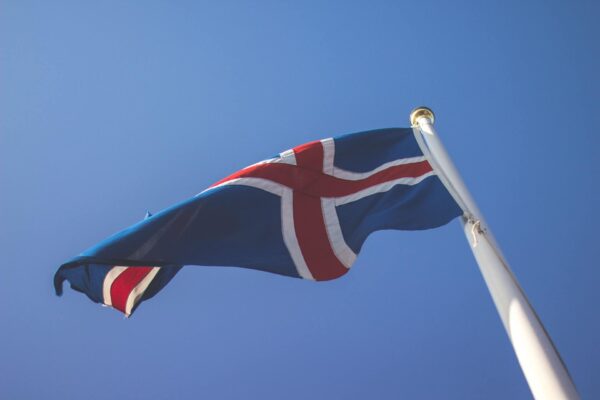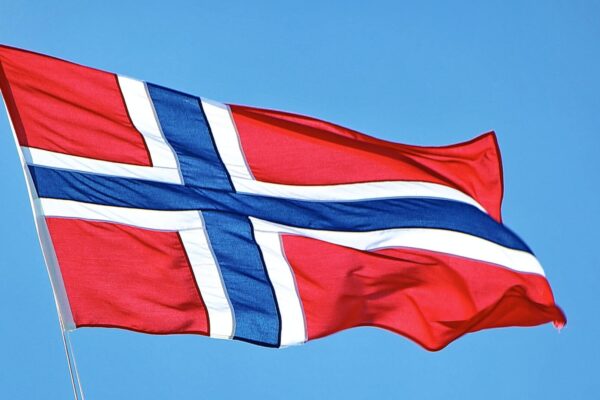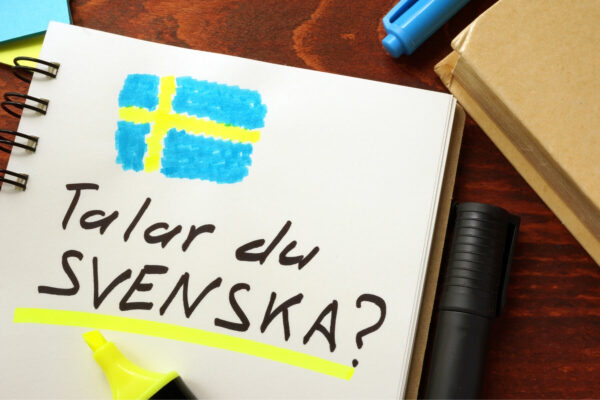Learn Danish, Swedish or Norwegian? Which Scandinavian language is right for you? Here we give you a brief overview of the basics of Danish – from vocabulary and grammar to pronunciation. Not only can you learn these, but you’ll also gain an insight into Danish and, with a little practice, you’ll be able to communicate on your next holiday in Denmark.
Danish (dansk) is a Scandinavian language from the East Norse branch of the Germanic language family. It is primarily similar to Swedish. Alongside Swedish and Norwegian, Danish is considered a mainland Scandinavian language.
| Own designation | dansk |
|---|---|
| Language origin | Old Norse |
| Native speakers | approx. 5.3 million |
| Official language in | Denmark, Faroe Islands |
| Dialects | 3 main dialects |
Learn Danish – Lesson 1: Basic vocabulary and grammar
Basic vocabulary
| Hello! | Hej!, Hallo! |
| Good morning/day/evening/night! | God morgen/dag/aften/nat! |
| How are you? | Hvordan har du det? |
| I’m doing well. | Jeg har det godt. |
| yes | ja |
| no | nej |
| Here you go! | Vær så god! |
| Thank you! | Tak! |
| Excuse me? | Hvad behager? |
| Excuse me, … | Undskyld, … |
| Bye! | Hej!, Farvel! |
Important: The personal pronoun I ( 2nd person pl.) for “you” is always capitalised in the nominative case.
The pronouns
| I | jeg |
| you | du |
| he | han |
| she | hun |
| it | den/det |
| we | vi |
| you | I |
| they | de |
Introduce yourself
| What is your name? | Hvad hedder du? |
| My name is … | Jeg hedder … |
| Where are you from? | Hvor kommer du fra? |
| I come from Great Britain. | Jeg kommer fra Storbritannien |
| I live in … | Jeg bor i … |
| I was born in … | Jeg er født i … |
| I am … years old. | Jeg er … år gammel. |
| I work as a … | Jag arbejder som … |
| And you? | Hvad med dig? |
Basic grammar rules: what you should know
- Capitalisation and lower case: In general, all words in Danish are written in lower case, unless they are the beginning of a sentence, a form of address (such as I for “you”) or (proper) names.
- Sentence structure: Danish sentence structure is similar to German and Swedish, which makes it easy for people knowing these languages: the scheme is subject predicate object. It should be noted that the verb always comes second in a main clause, even if the clause does not begin with the subject.
- Gender and article: In Danish, a distinction is made between the two indefinite articles en and et. What all Scandinavian languages have in common is that the respective indefinite article is attached to the noun to form the definite form – this is also the case in Danish: Et hus thus becomes huset in the definite form.
- Inflection of adjectives: Adjectives are differentiated in Danish according to their use: When used attributively, it comes directly before the noun (e.g. a fast car), when used predicatively, the adjective comes after the noun and refers to the predicate (e.g. The car is fast). A distinction is also made between weak and strong declension: adjectives used predicatively are always declined strongly, while adjectives used attributively can be declined strongly or weakly. This determines whether an e-ending is added to the adjective or whether it is adapted to the gender and number of the noun.
- Conjugation and tenses: Conjugating verbs is very easy in Danish. This is because, as in Swedish, only the tense and mode of the verb need to be taken into account. The conjugation is therefore independent of the person and number of the subject. The present and past tense consist of a single verb form for all personal pronouns, which often has the ending -er or -r. However, there are of course also irregular verbs that have to be memorised. Compound tenses consist of an auxiliary verb and a past participle.
Vocabulary trainer: Basic vocabulary


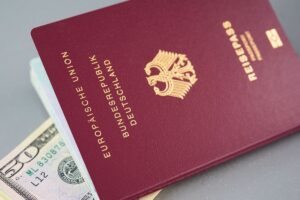
Learn Danish – Lesson 2: Useful vocabulary for your holiday in Denmark
On holiday
| On holiday | på ferie |
| Airport | (en) lufthavn |
| Hand luggage | (en) håndbagage |
| Suitcase | (en) kuffert |
| Rucksack | (en) rygsæk |
| Cash dispenser | (en) hæveautomat |
| book | (at) booke / bestille |
| Passport | (et) pas |
| Hotel | (et) hotel |
| Reception | (en) reception |
| Floor / Etage | (en) etage |
| Room service | (en) roomservice |
| Holiday home | (et) feriehus/sommerhus |
| Old town of Copenhagen / city centre | indre by |
| Bicycle | (en) cykel |
| Train | (et) tog |
| Ticket | (en) billet |
| Travel guide | (en) rejsefører |
| City map | (et) bykort |
| Museum | (et) museum |
| do something/undertake | (at) foretage noget |
| hike | (at) vandreture |
| camp | (at) campere |
| swim | (at) svømme |
Emergency
| Emergency | (en) nødsituation |
| Emergency call | (et) nødopkald |
| Help! | Hjælp! |
| Hospital | (et) hospital |
| Pharmacy | (et) apotek |
| Doctor | (en) læge |
Danish pronunciation: basics
The difficulty in pronouncing Danish lies in the fact that many words are not pronounced the way they are written. Even the letters are not always pronounced as we know them from English, for example.
The shock sound (Stød)
The so-called stød is a typical pronunciation feature of the Danish language. However, it is more of an accent phenomenon for which there are no longer any standardised rules. Theoretically, the stød is a glottal stop or laryngeal closure. There are also similar accents in Swedish and Norwegian.
Vocabulary trainer: On holiday



Order and shop
| order | (at) bestille |
| Restaurant | (en) restaurant |
| Café | (en) café |
| I would like to have … | Jeg vil gerne have … |
| Bon appetit! | God appetit! |
| Cheers! | Skål! |
| Breakfast | (en) morgenmad |
| Lunch | (en) middagsmad/frokost |
| Dinner | (en) aftensmad |
| This tastes very good. | Dette smager meget godt. |
| Can I have the bill, please? | Kan jeg få regningen, tak. |
| May I pay, please. | Må jeg betale? |
| go shopping | (at) gå på indkøb |
| Shop | (en) forretning/butik |
| Supermarket | (et) supermarked |
| Fruit and vegetables | frugt og grøntsager |
| Milk | (en) mælk |
| Meat | (et) kød |
| Fish | (en) fisk |
| Bread | (et) brød |
| Water | (et) vand |
| Coffee | (en) kaffe |
| Beer | (en) øl |
| Wine | (en) vin |
| Clothing shop | (en) tøjbutik |
| Cash register | (en) kasse |
| Bag | (en) pose |
| Where can I find … ? | Hvor finder jeg … ? |
| How much does it cost? | Hvad koster det? |

Orientation
| Orientation | (en) orientering |
| Entrance | (en) indgang |
| Exit | (en) udgang |
| Toilet | (et) toilet |
| Tourist information centre | (et) turistinformationskontor |
| Railway station | (en) (jernbane)station |
| Bus stop | (et) busstoppested |
| Post office | (et) posthus |
| Street | (en) gade |
| Petrol station | (en) benzintank/servicestation |
| Exit | (en) udkørsel/indkørsel |
| Car park | (en) parkeringsplads |
| Parking machine | (et) parkometer |
| Crossroads | (et) kryds |
| Motorway | (en) motorvej |
| Roundabout | (en) rundkørsel |
| Bridge | (en) bro |
| Excuse me, I have a question. | Undskyld mig, jeg har et spørgsmål. |
| Where is … ? | Hvor ligger … ? |
| I am looking for … | Jeg leder efter … |
| How do I get there? | Hvordan kommer jeg dertil? |
| How far is it to … ? | Hvor langt er der til … ? |
| I have lost my way. | Jeg er faret vild. |
| Turn round. | Vend om. |
| You have to turn right/left. | Drej til højre/venstre. |
| Go straight ahead. | Gå lige ud. |
| behind | bag |
| beside | ved siden of |
| I would like to have a ticket from Copenhagen to Odense. | Jeg vil gerne have en billet fra København til Odense. |
Learn Danish pronunciation
The special characters: å, æ, ø
Like all Scandinavian languages, Danish has special characters. These are pronounced as follows:
- The å is an open O (as in “order”, for example)
- The æ is pronounced like the a in “bad”
- The ø is pronounced like an ö (German) or an œ (French)
Silent consonants
The fact that Danish does not always sound the way it is written is mainly due to the consonants. There are consonants in the written word, but they are not pronounced. This is due to the historical development of the language. The silent consonants include d, g and t. There are other special pronunciation rules for the letter d that you have to learn.
Vocabulary trainer: On the road
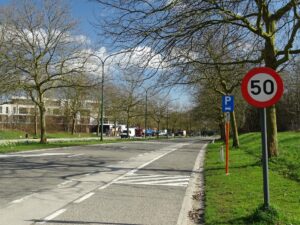



Learn Danish – Lesson 3: More everyday vocabulary
The weather
| The weather | (et) vejr |
| Weather forecast | (en) vejrudsigt/vejrmelding |
| Temperature | (en) temperatur |
| Degree | (en) grad |
| Sun, sunny | (en) sol, solrig |
| blue sky | (en) blå himmel |
| Rain, rainy | (en) regn, regnfuld |
| Wind, windy | (en) vind, blæsende |
| Snow, snowy | (en) sne, tilsneet |
| Ice | (en) is |
| Frost | (en) frost |
| Hail | (et) hagl |
| Fog, foggy | (en) tåge, tåget |
| Cloud, cloudy | (en) sky, skyet |
| Storm | (en) storm |
| Thunderstorm | (en) tordenvejr |
| Lightning | (et) lyn |
| Thunder | (en) torden |
| wet | våd |
| moist | fugtig |
| dry | tør |
| slick | glat |
| warm | varm, hed |
| cold | kold |
| Season | (en) årstid |
| Spring | (et) forår |
| Summer | (en) sommer |
| Autumn | (et) efterår |
| Winter | (en) vinter |
The numbers from 0 to 10
| zero | nul |
| one | en |
| two | to |
| three | tre |
| four | fire |
| five | fem |
| six | seks |
| seven | svy |
| eight | otte |
| nine | ni |
| ten | ti |
The days of the week
| Weekday | (en) ugedag |
| Monday | mandag |
| Tuesday | tirsdag |
| Wednesday | onsdag |
| Thursday | torsdag |
| Friday | fredag |
| Saturday | lørdag |
| Sunday | søndag |
3 tips: Practise Danish pronunciation
The principle of “learning by doing” is of course the best way to practise Danish pronunciation and internalise the special features. If you can’t spontaneously travel to Denmark to talk to a few Danes, these tips will help you:
- Audio(-visual) media: It can be particularly helpful if you listen to Danish radio, for example, or watch Danish films and series. This will help you get used to the sound of the language more quickly. As a beginner, you can of course set the subtitles so that the translation is easier.
- Audio language courses: Learning resources with audio content and audio examples are particularly helpful for learning pronunciation and understanding Danish better.
- Audio recordings: Practise your own pronunciation by repeating and recording example sentences and words. You can use this method to check how well you are doing. Simply take your mobile phone and then compare it with the audio sample (tip: with headphones). If you are not satisfied, repeat the recording. A vocabulary list with spoken language is helpful for this.
Vocabulary trainer: weather, numbers, days of the week



FAQ: Learn Danish?
The Danish and Swedish languages are closely related, which is why it makes little difference which language you choose to learn. Both are quite easy to learn for English native speakers. However, Danish pronunciation is a little more difficult than Swedish. For example, there are letter combinations that are pronounced differently in different words or sounds that we don’t recognise in English.
Basically, there are many words in Danish whose meaning we can derive from English, for example, because they are spelt similarly or sound similar. The difficulty here lies more in speaking and understanding, but this can also be learnt by internalising the rules and practising regularly. You will therefore probably not find it too difficult to get started in Danish.
Learn Danish in depth
Did you enjoy our short beginners’ course and would like to improve your Danish language skills? There are various methods and learning sources for this, which we will give you a brief overview of.
Learn Danish via app: Babbel
Babbel is a professional app for learning Danish. The language learning programme not only summarises everything you need to know about Danish, but also offers effective exercises and lets you choose which topics you want to learn personally. The Babbel app is available as a subscription model and can be tested free of charge for 7 days.
Learn Danish online for free: Duolingo
Alternatively, there is the Danish language course from Duolingo. This is free and includes both an app and the classic online programme on the PC.
Learn Danish with books
For beginners who don’t want to learn interactively but would rather get an overview first, books and other print materials are best suited. The practical thing is that there are many combined packages: Many books come with a CD with audio content or a digital programme.
Learn Danish with audio books and audio language courses
Audio language courses are also a good way to get started in Danish or as additional support. If you like learning via audio, this is the right method for you. At audible, for example, there is a large selection of different language courses and audiobooks that you can listen to on the go. This makes it easy to learn languages in your free time.

